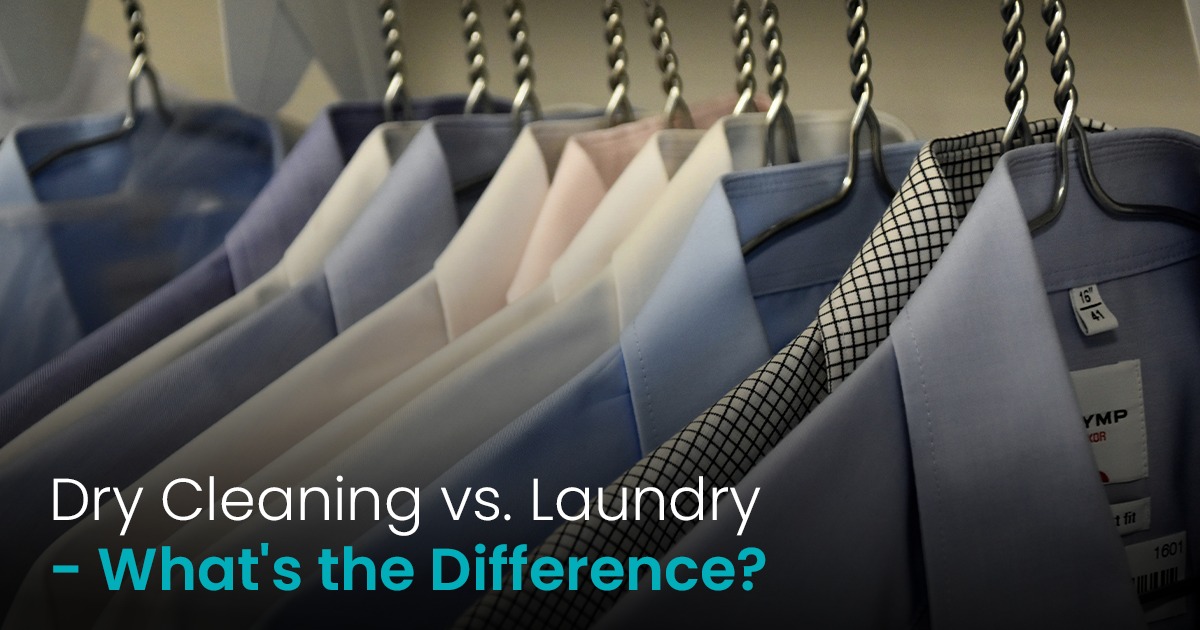
May 24, 2024
Dry Cleaning vs. Laundry - What’s the Difference?
Dry Cleaning and Laundry (also known as washing or wet cleaning) are two different methods of cleaning clothes and other textiles. Here's a breakdown of the key differences between the two:
Process
- Dry Cleaning: In dry cleaning, clothes are cleaned using a solvent (such as perchloroethylene) instead of water. The process is "dry" because water is not used as the primary cleaning agent. Instead, the solvent dissolves and removes dirt and stains from the fabric.
- Laundry/Washing: In laundry, clothes are cleaned using water as the primary cleaning agent. Detergents are used to break down and remove dirt, oils, and stains from the fabric. Agitation (such as the spinning of a washing machine drum) helps to dislodge dirt and clean the clothes.
Types of Fabrics
- Dry Cleaning: Dry cleaning is suitable for delicate fabrics that can be damaged by water or agitation, such as wool, silk, satin, velvet, and certain synthetic materials.
- Laundry/Washing: Laundry is suitable for a wide range of fabrics, including cotton, denim, linen, and most synthetic materials. However, some delicate fabrics might shrink, lose color, or become damaged when exposed to water and agitation.
Stain Removal
- Dry Cleaning: Dry cleaning is effective for removing oil-based stains and grease, as solvents can dissolve these substances without the need for water.
- Laundry/Washing: Washing is better for removing water-based stains, such as food and beverage spills, because detergents are designed to break down these types of stains.
Agitation
- Dry Cleaning: The dry-cleaning process involves minimal agitation, which helps prevent damage to delicate fabrics.
- Laundry/Washing: Washing typically involves more aggressive agitation, which can effectively remove dirt but might be too harsh for delicate fabrics.
Shrinkage and Color Fading
- Dry Cleaning: Dry cleaning is less likely to cause shrinkage or color fading in fabrics.
- Laundry/Washing: Washing, especially in hot water or using improper settings, can lead to shrinkage and color fading in some fabrics.
Environmental Impact
- Dry Cleaning: Traditional dry cleaning using perchloroethylene (perc) has raised environmental concerns due to its potential health and environmental effects. However, there are newer, more environmentally friendly solvent alternatives available.
- Laundry/Washing: Washing consumes water and energy, and the use of detergents can introduce chemicals into the environment. However, advancements have been made in producing eco-friendly detergents and using more efficient washing machines.
Convenience
- Dry Cleaning: Dry cleaning services are commonly used for items that require special care, stain removal, and maintenance of fabric quality. It's especially useful for formal wear, suits, and delicate garments.
- Laundry/Washing: Laundry is more suitable for everyday clothing and items that can tolerate water and agitation.
In summary, Dry Cleaning is best suited for delicate or sensitive fabrics that can't withstand the rigors of traditional washing, while laundry/washing is suitable for most everyday clothing. The choice between the two methods depends on the fabric type, the nature of the stains, and the specific care instructions provided on the clothing's care label.